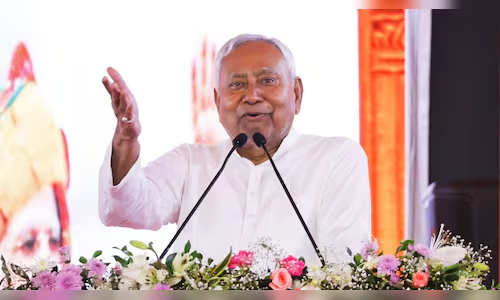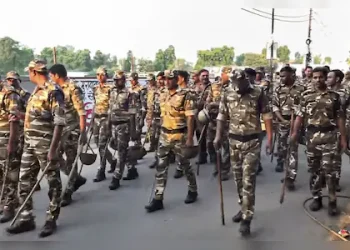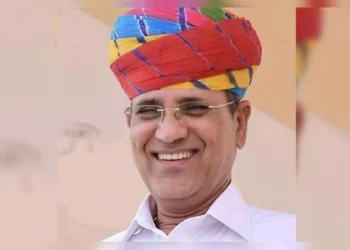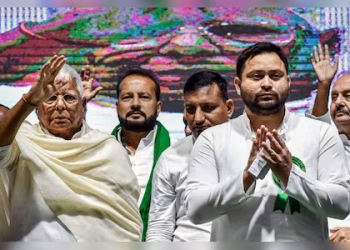The National Democratic Alliance (NDA) and opposition bloc INDIA are racing to finalize seat-sharing deals, but anxious days lie ahead with internal tensions bubbling just beneath the surface.
The electoral contest is largely expected to be a straight fight between the incumbent NDA, led by Chief Minister Nitish Kumar, and the Rashtriya Janata Dal (RJD)-led Mahagathbandhan.
In the 243-member Bihar Assembly, the NDA currently holds 131 seats: 80 for the BJP, 45 for the JD(U), 4 for the HAM(S) and two independents. The Mahagathbandhan holds 111 — RJD 77, Congress 19, CPI(ML) 11, CPI(M) 2 and CPI 2.
In the 2024 Lok Sabha elections, the NDA won 29 out of 40 seats in Bihar, with the BJP and JD(U) winning 12 seats each, giving momentum to the alliance ahead of the Assembly race.
Even though the NDA appears confident on paper, behind-the-scenes negotiations, notably involving Chirag Paswan, Jitan Ram Manjhi and Upendra Kushwaha, have left the alliance juggling competing demands. The INDIA bloc, meanwhile, hopes to consolidate its caste arithmetic, with Tejashwi Yadav anchoring its EBC-focused argument.
Added to this is a third unpredictable axis: Prashant Kishor’s Jan Suraaj party, which has discreetly expanded its presence on the ground and claims to be ready for a real electoral debut.
This is how the three parties are positioning themselves for Bihar 2025.
NDA: Between public trust and private tensions
In public, NDA allies display their unity, but behind closed doors, seat-sharing negotiations remain a delicate balancing act. Union Minister Dharmendra Pradhan, who has been appointed as the BJP’s election in-charge for Bihar, is leading the outreach to the alliance partners.
Over the weekend, he held a series of one-on-one meetings with key allies, including JD(U) chief Rajiv Ranjan Singh ‘Lalan Singh’, Hindustani Awam Morcha (HAM) chief Jitan Ram Manjhi and Rashtriya Lok Morcha (RLM) chief Upendra Kushwaha.
While Manjhi played down any discord, saying “all is well under the NDA” and that seat-sharing would be resolved soon, his subsequent flight to New Delhi that evening sparked speculation that further negotiations were underway. Pradhan also called Lalan Singh and Kushwaha separately, although Singh described the BJP-JD(U) meeting as just a “courtesy call”.
Despite appearances, BJP insiders indicated that a working formula is being finalized: the BJP could contest about 101 seats, the JD(U) about 102, with the rest divided among allies, including Chirag Paswan’s Lok Janshakti Party (Ram Vilas), Manjhi’s HAM and Kushwaha’s RLM.
Chirag Paswan remains a central point in the NDA’s internal calculations. Fresh from a successful campaign for Lok Sabha, where his party contested only five seats but held sway, Chirag would now demand up to 40 seats in the Assembly. While BJP leaders credit him with “bounced back” from his outsider status in 2020, when his party went solo and hurt the JD(U)’s prospects, they are also wary of giving up too much ground.
Sources within the BJP suggest that the alliance may not be able to part ways with more than 20 seats. The fact that he is pushing for a large share suggests a potential conflict to come. If this issue is not resolved, it could disrupt the delicate balance of castes and regions in the alliance.
INDIA bloc: Tejashwi in the lead, EBC in the foreground
On the opposition front, INDIA bloc leaders met at Tejashwi Yadav’s residence in Patna to fine-tune seat-sharing arrangements. The meeting was attended by senior leaders of the RJD, Congress, Left parties and the Vikassheel Insaan Party (VIP).
CPM leader Ajay Kumar told The Indian Express that the seat-sharing formula has been finalized and will be announced formally on Tuesday. Bihar Congress president Rajesh Ram and VIP chief Mukesh Sahani were also present, signaling the bloc’s attempt to project cohesion. The RJD separately summoned its top leaders to finalize its own internal allocations ahead of the official declaration.
Even before announcing its list of candidates, the INDIA alliance made a bold caste-centric pitch with the launch of ‘Ati Pichhda Nyay Sankalp’, a manifesto aimed exclusively at the Extremely Backward Classes (EBC) of Bihar, who make up around 36 per cent of the state’s population.
This 10-point resolution includes promises such as:
- A new law to prevent atrocities against EBCs, modeled on the SC/ST law
- Increase EBC reservation in local authorities from 20% to 30%
- An attempt to lift the 50% reserve cap by seeking to include state law in the Ninth Schedule
- Force private schools to reserve half of their RTE quota for disadvantaged groups
- A 50% quota for EBC, SC, ST and OBC in state contracts up to Rs 25 crore
- A powerful reservation regulator to monitor implementation
- This surge by the EBC signals an attempt by the INDIA bloc to erode the traditional base of the NDA.
Modi-Nitish reveals benefits, but no NDA manifesto yet
While the INDIA bloc’s caste strategy is now open, the NDA is yet to release an official manifesto. However, Prime Minister Narendra Modi and Chief Minister Nitish Kumar have made targeted announcements in recent weeks, particularly aimed at women, youth and marginalized communities.
Prime Minister Modi launched the ‘Mukhyamantri Mahila Rojgar Yojana’ in Bihar in September, transferring Rs 10,000 each to 75 lakh women across the state, a massive direct benefit aimed at creating women entrepreneurs.
Furthermore, Nitish Kumar announced more than 20 social measures, including:
- Unemployment benefit of ₹1,000/month for graduates
- Interest-free education loans and extended repayment windows
- Pension hike to ₹1,100 for elderly, disabled widows
- ₹9,000 honorarium for Anganwadi workers and Rs 3,000 incentive for ASHA workers
- Free electricity for up to 125 units, support for solar power plants for the poorest families
- Initial assistance of ₹10,000 to one woman per household to start a business, with follow-up assistance of up to ₹2 lakh
- Although these announcements are not presented as a formal manifesto, they signal the NDA’s strategy to saturate the social space before the model code of conduct comes into force.
Jan Suraaj: The X Factor
The third force in the triangular race in Bihar is Prashant Kishor’s Jan Suraaj Party, which is expected to contest all 243 seats. The party said it would field its “first list of candidates” for the Bihar assembly elections on October 9.
Besides promising sufficient number of tickets to women, Muslims and Extremely Backward Classes (EBC), Kishor also said that he himself might enter the fray “if the party takes the decision”.
If Jan Suraaj manages to secure even a single-digit vote share for some seats, it could narrow the margins in hotly contested constituencies, particularly in the central regions of Bihar and Mithila.
Election preparation
Initially, the Election Commission will deploy 243 general observers – one for each Assembly constituency – replacing the earlier practice of assigning a single observer to multiple seats. The scale of the deployment is unprecedented: more than 8.5 lakh election staff, 17,800 micro-observers for polling day, 4,800 for counting and around 2.5 lakh police officers. There will also be 29,000 counting officers, 38 police observers and 67 expenditure observers to monitor the process.
The EC has also intensified voter awareness and digital surveillance. There are now 90,712 desk officers (BLOs) and 243 electoral registration officers (EROs) in the field. Voters can access services through the ECINET app or by calling the 1950 hotline number, including scheduling a call with their local BLO.
Another first, real-time electoral participation data will be made public via a dedicated dashboard. Presiding officers will upload turnout figures to the ECINET platform every two hours on election day to reduce information lag.
Logistics reforms are also being rolled out. Polling places will now be limited to 1,200 voters each to minimize crowding and reduce wait times. In high-rise areas, additional stands will be installed. To facilitate access, voters will be able to drop off their mobile phones at designated counters outside polling stations.
Chief Election Commissioner Gyanesh Kumar described the upcoming polls as a landmark exercise, promising that “Bihar elections will be easy for voters” with complete law and order control. This time, the state has 7.43 crore registered voters, including 14 lakh first-time voters.








